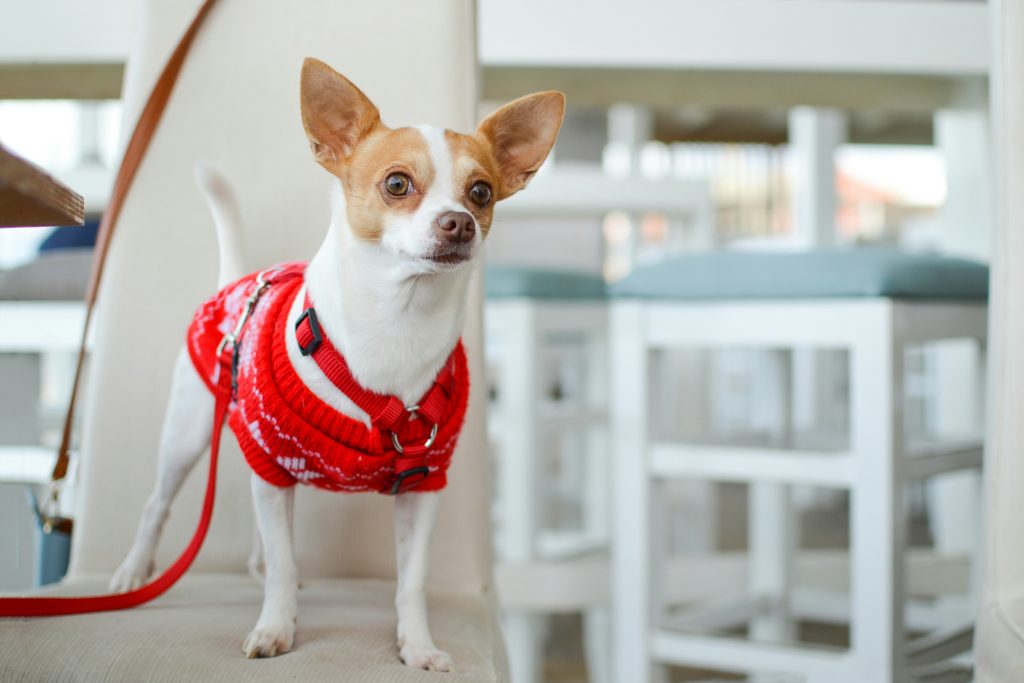Pets and Their People Blog
Need Before Breed: Assistance Animals Are Not Limited to the “Fab Four”
Not everyone wants or can handle one of the “Fab Four” (Lab, golden retriever, standard poodle, or German shepherd dog). Some people may need a smaller or larger dog. Some may have fears of specific breeds.
The “Fab Four” in the Assistance Animal Community
The Labrador retriever and the golden retriever are two of the most commonly seen breeds trained to be assistance animals. Generally speaking, it is because these two breeds have temperament traits that best fit with the requirements necessary for a working dog who will encounter a variety of people, situations, and environments in their daily lives, such as sociability, biddability, resilience and confidence. Guide Dogs for the Blind (GDB) in North America trains yellow and black Labrador retrievers, golden retrievers, and Lab/golden crosses, due to health, temperament, size, and adaptability. (Find answers to the most-asked questions about Guide Dogs for the Blind here.)
Standard poodles and German shepherd dogs are also popular breeds for assistance dog work, and round out what is known as the “Fab Four” in the assistance animal community.

(Photo by Tamara Bellis on Unsplash)
However, assistance animals are not limited to those four breeds.
Just as the nature of disabilities varies greatly, so do the needs of individuals with disabilities.
With varying needs, lifestyles, and capabilities, other breeds may be preferable to one of the Fab Four.
Selecting the “Best” Breed for an Individual
While there are no legal regulations on the size of an assistance animal, individuals with disabilities may have many reasons for preferring a smaller breed. A small breed can be easier to handle, easier to travel with, easier to live in smaller housing with, and many small breeds have longer lifespans than larger breeds.
However, selecting a small breed dog as an assistance animal also comes with some additional challenges, such as businesses and the general public questioning the legitimacy of the small breed assistance dog, and small dogs can be harder for others to see, particularly in crowded areas, making injury more likely if not careful.
On the flip side, some individuals may have a need for a larger breed than one of the Fab Four. Larger breeds tend to be more popular for certain mobility tasks and psychiatric tasks. Yet, a large breed dog may face additional challenges of remaining unobtrusive in public, or may not fit in standard public transportation or in airplane cabins.
Some individuals may have fears of certain breeds, or allergies to certain breeds, including any of the Fab Four. Once again, the breed choice is made by the individual with the disability, and should be a breed that best fits not only their needs for performing tasks to mitigate their disability, but equally as important is to fit their lifestyle. Energy level, grooming requirements, and longevity are other factors that should be considered when selecting the “best” breed or animal for an individual.
Regardless of the breed, to be a successful assistance dog, the individual dog must have the temperament, biddability, resilience, and adaptability required to perform their trained tasks with the distractions they will encounter when working in public.
Download this article as a handout:
About the Pet Professional Guild (PPG) Assistance Animal Division

Ph.D., PCT-A,
LSHC-S, CPDT-KA,
CTDI, AACE,
Division Chair
Our volunteer committee includes a broad representation of pet professionals with a variety of skills and interests specific to assistance animals. We invite individuals and professional organizations interested in training, working with, and receiving support from animals who assist people in different ways to join PPG. Pet guardians can join for free.
We look forward to welcoming you into an inclusive group that prioritizes humane treatment and welfare of both people and assistance animals!

